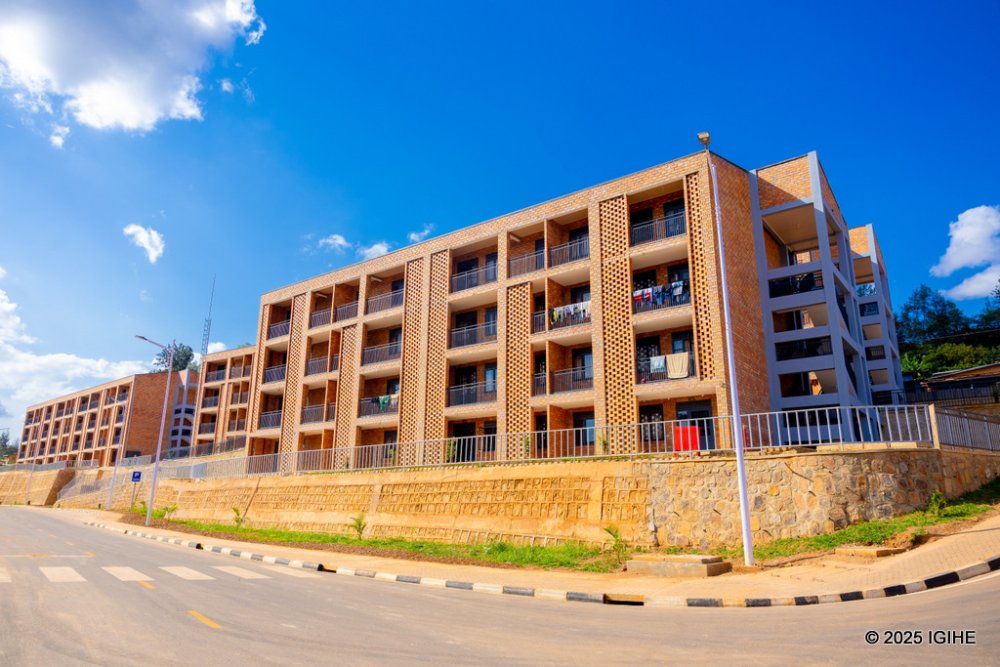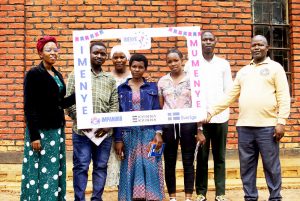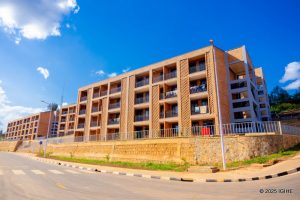Rwanda builds a future without slums
3 min read
A bright, modern housing unit in the Mpazi estate, recently completed.
By Telesphore KABERUKA
In 2022, only 22.9% of Rwandans lived in urban areas, according to the National Institute of Statistics of Rwanda (NISR). Most of the population still resided in rural settlements, where access to basic infrastructure such as water, sanitation, and proper roads remained limited. Informal housing, often built without planning or legal permits, had become a defining feature of many growing towns, bringing health risks, environmental degradation, and safety concerns.
But Rwanda now wants to flip that narrative. Under its revised National Urbanization Policy (Feb 2025), the government has set an ambitious target after which by 2050, 70% of Rwandans will live in well-planned, modern cities. The new plan marks a bold departure from the 2015 framework, aligning the country’s vision with global sustainable urbanization models.
“Urban development is at the heart of Rwanda’s transformation,” said Uwayezu Servile, an economist in the Ministry of Infrastructure (MININFRA) to journalists at a recent three-day media training in Rubavu organized by Afrimedia with support from FOJO Media Institute through Rwanda Media Program. “We aim for cities where people can live, work, and thrive in safe environments with full access to essential services, “he added.
From chaos to order
For years, mainly before 2015 when the first National Urbanization Policy was established, unplanned construction, known locally as imiturire y’akajagari (chaos construction), spread rapidly across peri-urban areas. Residents often built houses in areas not serviced with roads, electricity, or water. Experts say such informal development not only limits access to amenities but also drives inequality and environmental degradation.
Janvier Muhire, an urban law expert from the Rwanda Housing Authority (RHA), warns that ignoring master plans is economically self-defeating.
“When people build in zones reserved for schools, hospitals, or roads, those structures are eventually demolished,” said Muhire to journalists in the aforementioned recent three-day media training.
“It’s always wiser to consult the city’s master plan before investing in any land”, he warned.
Urbanists also point to lessons from countries like China and Singapore, where planned housing and integrated infrastructure transformed millions of lives. “If we change our mindset and abandon disorderly construction, we can achieve what these nations have,” Uwayezu added.
Decentralizing growth
To curb overpopulation in Kigali and spread economic opportunities nationwide, the government is building a network of secondary cities that are Huye,Nyagatare, Kirehe, Musanze, Kayonza, Rubavu, Karongi and Rusizi. Each is being developed with facilities equivalent to those found in the capital, modern housing, paved roads, clean water, power, markets, and schools.
Other towns like Muhanga, Rwamagana, and Bugesera, designated as satellite cities, are already showing signs of rapid modernization.
In Rubavu, one of the western secondary cities, residents say they are beginning to feel the benefits. “We no longer see much difference between life here and in Kigali,” said Rugaba Emmanuel, a professional engineer supervising the construction of a billion-franc commercial complex near the main car park in Rubavu town.
Taking the model of the Mpazi Project
Perhaps one of Kigali’s most striking success stories is the Mpazi Project, a housing initiative that replaced slums along the Mpazi ravine with 720 modern apartments accommodating 3,600 residents. Built on just 2.2 of the 15 available hectares, the project freed up land for green spaces and further development.
“The project proved that dignified, safe housing is possible even for low-income citizens,” said Emma Claudine Ntirenganya, spokesperson for the City of Kigali. “We no longer need unsafe and outdated housing. Everyone deserves to live in a healthy, planned environment”, she added.
Urbanization, when planned, fuels economic growth. According to the World Bank (2023), every 10% increase in urban population can raise a country’s per capita GDP by up to 2%. By spreading urban development to all provinces, Rwanda aims to reduce rural poverty, create jobs, and improve public health outcomes.
The new urban policy also aligns with Vision 2050, the country’s blueprint for becoming a high-income nation. As part of this transformation, urban residents will live closer to employment centers, schools, and hospitals, while minimizing environmental impact.



